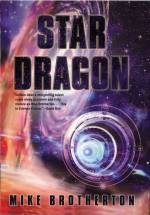Search
Science and Science Fiction: Artificial Gravity in 2001
September 9th, 2008
One of the other issues I didn’t mention yesterday that comes up in hard science fiction is figuring out the parameters for artificial gravity. It’s relatively straightforward.
Here’s the amazing scene approaching the orbiting space station:
It’s possible to calculate the gravity on board the outer ring.
Wikipedia provides the necessary information in its article about artificial gravity. From the clip, I estimate 1 revolution per minute. For the radius, I make an estimate based on the size of people in the docking bay, and later showing the docking bay and the whole satellite face on, with a value of about 300 meters. This isn’t a perfectly easy thing to do. Make your own estimates.
From the equation in the wiki, this comes out to produce an artificial gravity of approximately 1/3 of an Earth gravity, appropriate for a way station between the Earth and moon. I recall getting something closer to lunar gravity (1/6 an Earth gee) when we did the exercise at Launch Pad. It may have been more accurate given the ability to project the image on a big screen, whereas my estimates here are made off a laptop screen.
Now, to cap things off, how about Armageddon? In that movie, they don’t even get the direction of the artificial gravity right! Show the appropriate scenes to elementary school kids, and they will figure it out. From merry-go-rounds, they know how things should work. Michael Bay, not so much. Unforgivable for a film made in any year, let alone 30 years after 2001 that got it right.
You can follow any responses to this entry through the RSS 2.0 feed. You can leave a response, or trackback from your own site.


Hrmmm, are you sure “artificial gravity” is the right way to describe it? Generally when you see that phrase in science fiction it’s referring to something a bit more exotic than acceleration due to rotational movement.
It’s low tech, but it’s artificial gravity in my book, and almost the only one we have a clue about employing. I’d use it that way in my science fiction anyway.
[…] Science and Science Fiction: Artificial Gravity in 2001 […]